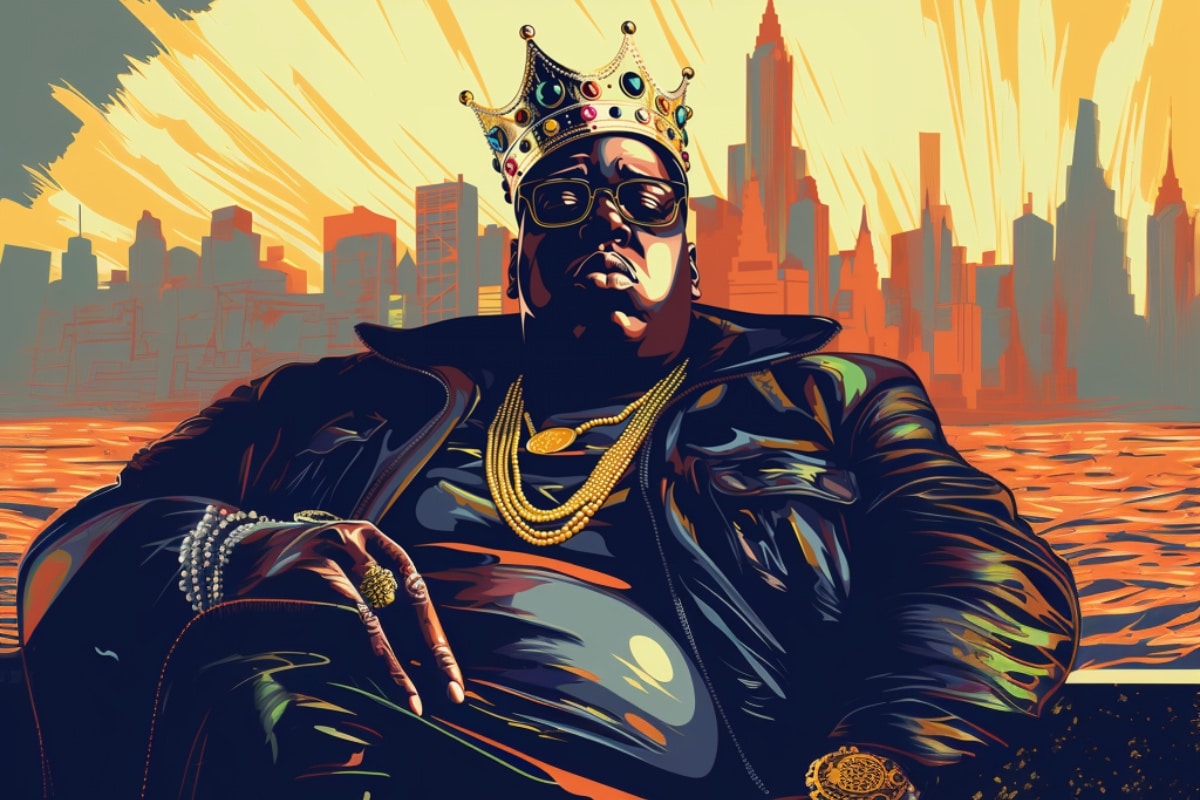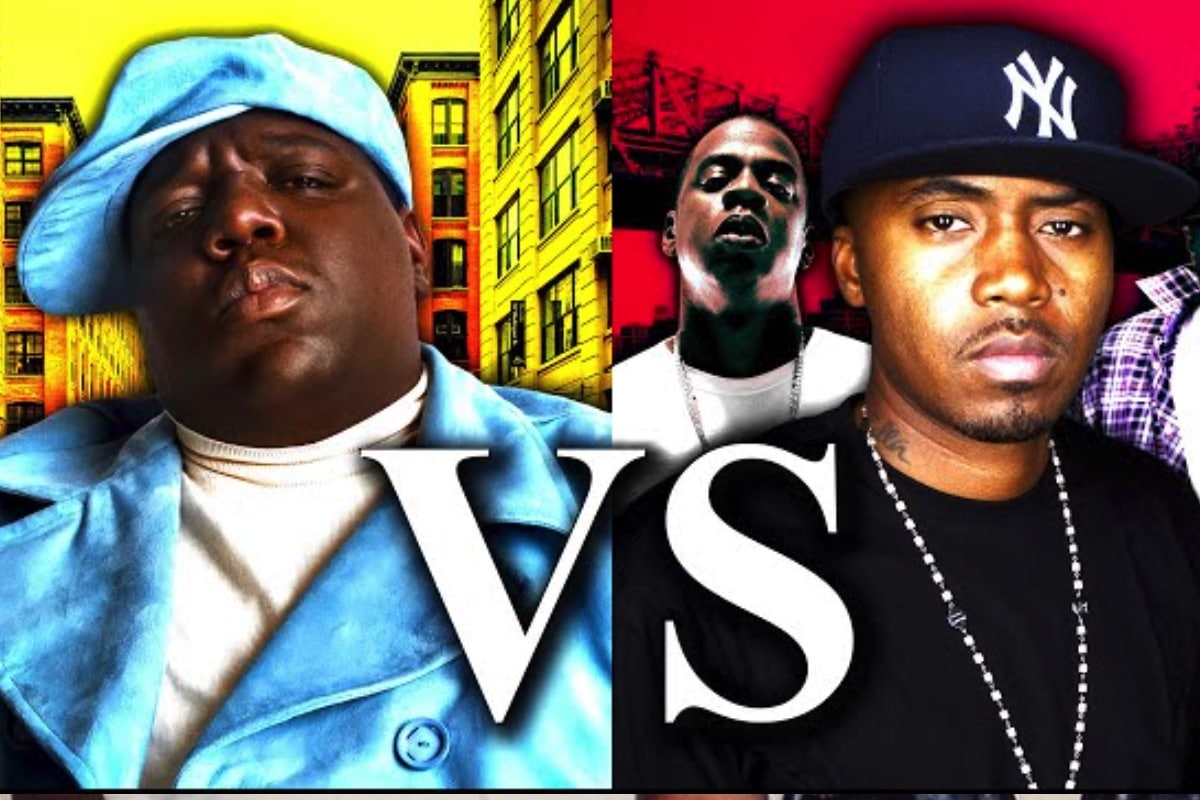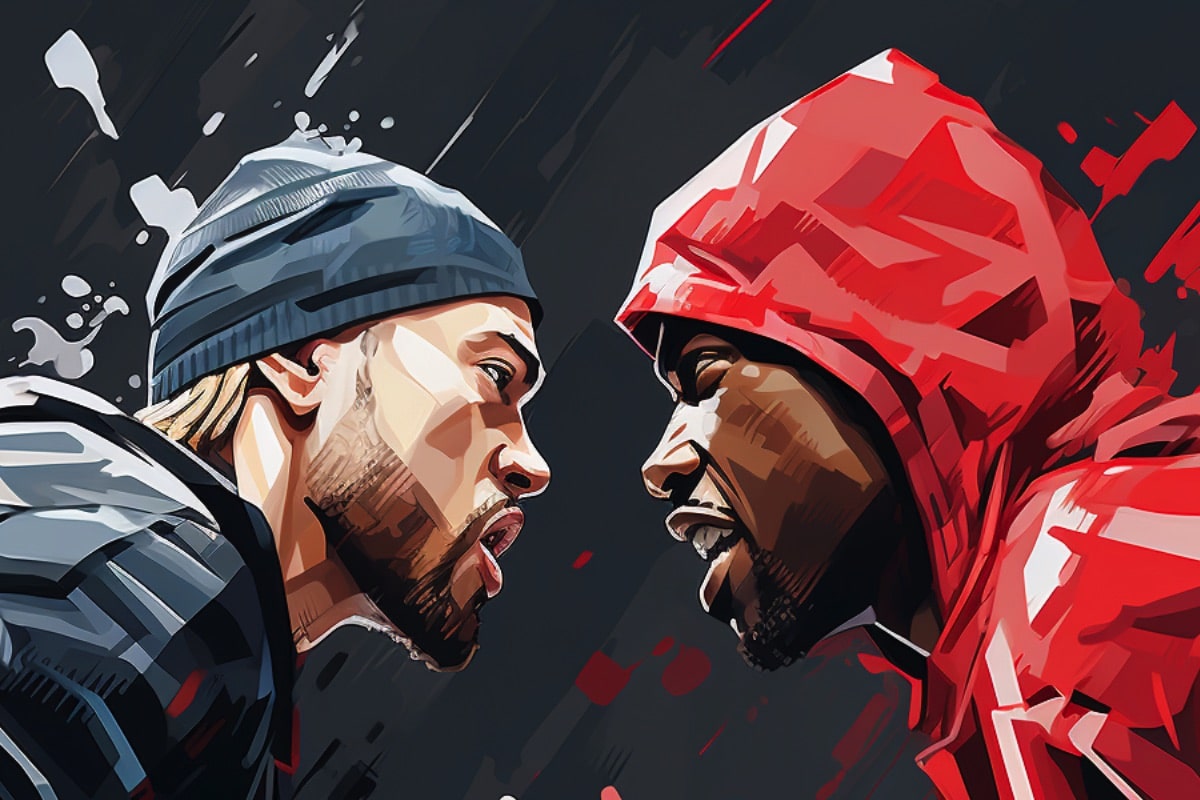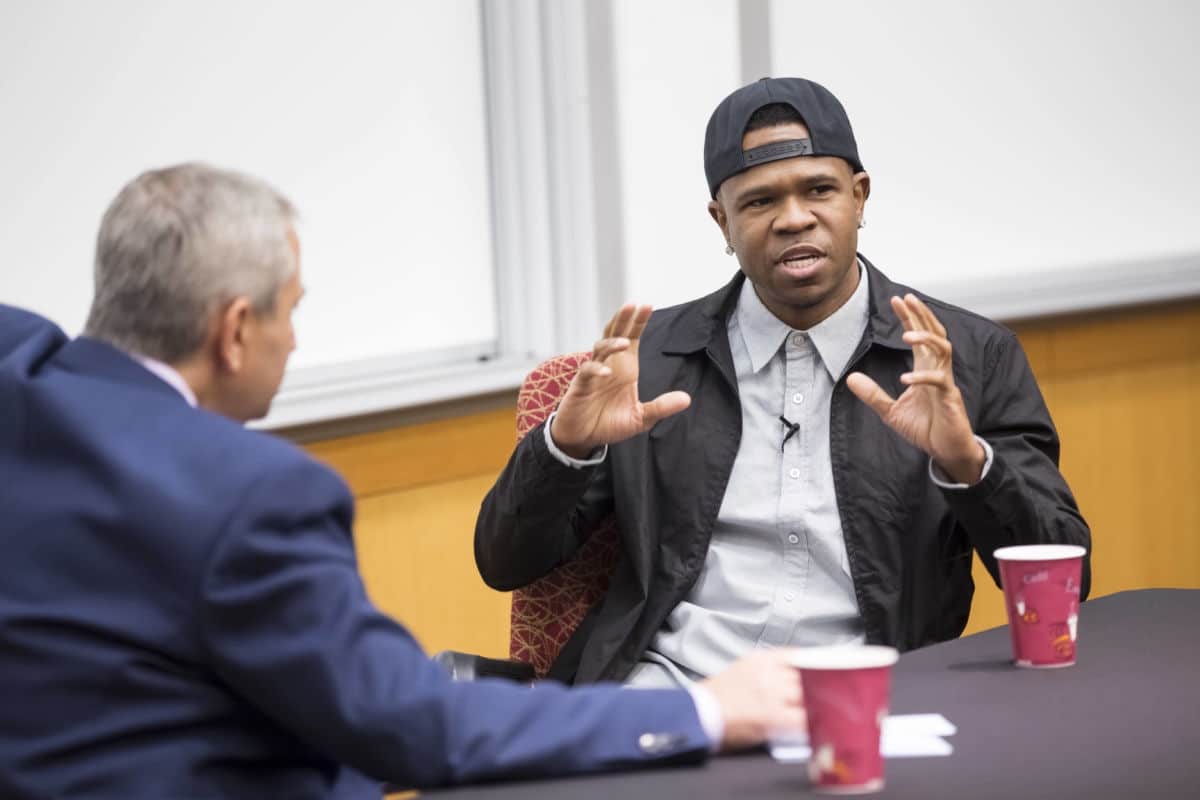For all of the arguments over whether August 11, 2023 was really hip-hop’s 50th birthday, one thing about the culture remains clear. No matter when you think its beginnings took place, or who was responsible, hip-hop’s creation was a New York thing.
The first parties (including the disputed August 11, 1973 rec room show)? In the Bronx. Pioneering DJs like Bambaataa, Flash, Hollywood, and the unfortunately too unsung Grandmaster Flowers? The Bronx, uptown, and Queens. The first use of the term “hip-hop” in print? A newspaper that covered the downtown scene. The man called the “father of graffiti” was from Washington Heights. Breaking/b-boying is generally acknowledged to have started in New York as well. All of the culture’s early landmarks were NYC-related, with the exception of the Sugar Hill Gang, who were from a far-off land called New Jersey. And even they openly courted inspiration (and sometimes even lyrics) from what was happening in the Bronx.
As the 1970s turned into the ‘80s and rap records played a larger part in the culture, almost all of the important rappers and groups were from one of the five boroughs. The pioneering groups of the pre-“Rapper’s Delight” era were from the city, and some of them made the transition into record-making. Kurtis Blow, the first rapper to be signed to a major label, was raised in Harlem. Run-DMC, the group that signaled a new streetwise, stripped down approach to rap music, was from Hollis, Queens—as was LL Cool J, Def Jam’s breakout star. In fact, for most of hip-hop’s first decade and a half, it’d be easier to name major figures who weren’t from New York City than ones who were.
By the mid-1980s, plenty of other cities had hip-hop scenes of their own. Many of them were developing interesting new sonic twists that would in short order push all of rap music forward. Miami was developing bass music. L.A. had a faster, futuristic, dance-oriented approach (about which more later). Philadelphia had a wide range of sounds from Schoolly D’s proto-gangsta rap to the family-friendly storytelling of DJ Jazzy Jeff and the Fresh Prince. But through that era and into what is now considered rap music’s “golden era” (1986-1990 or thereabouts), New York City was still the heartbeat of rap.
Looking back now, it’s apparent that NYC no longer has the crown. Somewhere along the line, hip-hop’s birthplace stopped being the center of the rap music universe. Now, after years of worrying (at least, worrying from me) that regionalism in hip-hop was going to be just another thing disrupted and swallowed by the internet, regional scenes are back with a vengeance. Just look at recent explosions of interest in scenes in places like Flint, Michigan and Milwaukee, Wisconsin. And rap’s center of gravity has for a long time been south of the Mason-Dixon line.
You could tell the shift was coming for a long time. As far back as 2003, 50 Cent—as savvy a trend-finder as anyone in hip-hop at the time or since—explained his commercial dominance by saying, “I’m a New Yorker, but I sound Southern.” It was a nod to the fact that Southern rappers were changing the sound of the music, and their commercial dominance was apparent to anyone who was watching. The popularization of trap at this time, and the explosion of snap music in 2005, fully cemented in the public imagination the idea that the rap game had moved to the South. You could be happy about it, you could be angry, you could ride the wave, you could lament that things used to be better before those meddling kids took over. But you couldn’t deny that the South was running things.
But that still leaves us with the question at the heart of this essay: when exactly did New York City lose the crown? And why?
In the early-to-mid 1980s, L.A. was all about electro. Ice-T, when I interviewed him about his early days, jokingly referred to it as “aerobic music”: quick tempos, electric bleeps and bloops, lots of heavy breathing. DJs with exotic names like “Arabian Prince” and “Egyptian Lover” made fast, danceable songs, often featuring futuristic-sounding vocals. Egyptian Lover’s 1984 classic “Egypt, Egypt” stands as a prototypical example.
One of the DJ crews in that milieu was the World Class Wreckin’ Cru. The group, which was put together by producer Alonzo Williams, had among its members a young, virtuosic DJ named Andre Young, who performed under the Julius Irving-inspired moniker Dr. Dre.
But Dre eventually grew tired of the electro beats and Williams’ glammy stage getups, and wanted to do something else. So he became part of a local supergroup of sorts, with his Wreckin’ Crew pal DJ Yella, Arabian Prince, and two rappers, MC Ren and a kid named Ice Cube, the latter of whom had put out a few jokey songs with the group C.I.A. (Criminals in Action). The whole thing was assembled by a drug dealer and 10th grade dropout named Eric Wright, who rapped under the name Eazy-E.
The group, which eventually also came to include the D.O.C. as an additional writer/unofficial member, called themselves N.W.A. By the time their 1988 album Straight Outta Compton (which followed a 1987 “and friends” compilation) began to catch on nationally, they were rightfully billing themselves as “the world’s most dangerous group.”
No more electro for these guys, or at least not much (they didn’t leave it behind entirely—check out their 1988 track “Something 2 Dance 2”). Their new approach—sample-based, aggressive beats and curse-filled, uncensored, often violent lyrics that found them going after police and street enemies in the same breath—popularized the idea of “gangsta rap.” It’s a term that has come to be meaningless today, and that the group never liked (“reality rap” was the name they preferred for their style), but it held a lot of popular currency. N.W.A. inspired legions of rappers and groups. But that alone wasn’t enough to change hip-hop’s center of gravity. That would happen just a few years later, once the group splintered into several factions due to infighting.
In the spring of 1992, Los Angeles exploded. Six days of rebellion followed the Rodney King verdict. It quickly became a media cliché to say that L.A. rappers had predicted the uprising. But there was some truth to the trope. Ice Cube, one of the primary oracles, found himself at the center of nationwide controversy with his 1991 album Death Certificate, in particular for the track “Black Korea,” which expounded—in a notably ugly way—on Black/Korean tensions that were roiling the city at the time.
In the aftermath of those earth-shattering days, Dr. Dre was making an album. He took a new approach (inspired, some say, by his labelmate Gregory Hutchinson) that became known as “G-funk,” the “g” standing for “gangsta.” The approach was simple: grooves inspired by (or often taken from) the Parliament-Funkadelic family tree, catchy melodies, and tough, streetwise lyrics. Dre was G-funk’s great popularizer. But he was not its greatest voice. That title belonged to Calvin Broadus.
Broadus, who rapped under the name Snoop Doggy Dogg, was tall and laconic. He had a laid-back style that was irresistible to anyone who heard it, and he had a seemingly endless supply of rhymes that he could spit off the top of his head.
Dre and Snoop, as a team, were unstoppable. Their first single, “Deep Cover,” was coincidentally released just weeks before the L.A. riots, and its anti-police hook that called for a “187 (homicide) on an undercover cop” couldn’t have been any more timely.
“Deep Cover” built anticipation for Dre’s debut solo album. But nothing could prepare the hip-hop world for the seismic shock that The Chronic would bring.
Dr. Dre’s debut solo album was released in December, 1992. It was titled after high-grade marijuana—notable for someone who had warned listeners not all that long ago of the dangers of weed (“it’s known to give a brother brain damage”) on N.W.A.’s “Express Yourself.”
Getting high wasn’t the only thing on Dre’s mind, though. The L.A. uprising is an inescapable presence on The Chronic. But it’s a spectral one. The anger is there (see “The Day the N*ggaz Took Over,” which samples a documentary about the rebellion). But the specifics are largely gone. What’s left is weed, partying, personal beefs with old groupmates, and generalized tough talk.
That wouldn’t be revolutionary, or even particularly worth mentioning, if it wasn’t for the sound. The Chronic is a record mostly of replays, not samples. Dre, a notorious perfectionist, needed the control that came with redoing classic instrumentals.
The end result was a record that sounded so good, so masterful, so clear, that it got Dre compared to production legends Phil Spector and Brian Wilson. The engineering and production blew away Interscope head Jimmy Iovine—a man who knew a thing or two about great-sounding records, having worked on Bruce Springsteen’s Born to Run.
“Dre’s sonics were far superior to any rock record being made, or any hip-hop,” Iovine said in a documentary. “It just sounded better than anything else on my speakers.”
The sound of the record was so captivating, so instantly accessible, that it changed the focus of the hip-hop world overnight. Death Row Records, the label formed by Dre, the D.O.C., and a business associate of the D.O.C.’s named Suge Knight, became an instant powerhouse. The artists on the label, most of whom were heard either on The Chronic or Snoop’s November 1993 debut Doggystyle, became stars in their own right.
New York couldn’t compete. Dre’s sonic innovation, and the gangsta theatrics that went along with it, became the dominant force in hip-hop. Many of Dre’s productions were catchy enough to become actual hit singles, something the sampling purists of New York couldn’t duplicate. “Nuthin’ but a ‘G’ Thang” hit number two on the Billboard Hot 100, chart real estate formerly reserved for the crossover-iest of harmless crossover hits like “Ice Ice Baby” or “Jump”—not for songs that offhandedly mention “pimpin’ hoes and clockin’ a grip.” But the song was just that good.
Soon, the amount of gangsta rap groups would be nearly uncountable. Even former pop-rappers like MC Hammer would be forced to adopt the G-funk sound and toughen up their image. Compton groups like Compton’s Most Wanted and 2nd II None, many of whom predated The Chronic, would find new attention. Some of these California rappers would turn their attention three thousand miles away, to hip-hop’s birthplace.
The “East Coast-West Coast feud,” so-called, has been written about to death. But more than personal vendettas and unsolved murders, what is interesting and actually under-examined about it is how much of it was actually about hip-hop. Tim Dog’s “Fuck Compton” criticizes the left coast’s “wack lyrics and bullshit tracks.” Compton rapper Tweety Bird Loc sounds truly offended on “Outta Here” that Bronx giant KRS-One was dismissive of gangsta rap. And it was a music video that created the moment that struck almost everyone, including Jay Z, as crucial: a giant Snoop Dogg stomping through the New York City skyline in the video for Tha Dogg Pound’s “New York, New York.”
New York City would make strong attempts to regain its hip-hop centrality over the years. There was the so-called “boom-bap” era of the ‘90s, Bad Boy’s blingy reign, G-Unit’s run, even the rise of Brooklyn, followed by Bronx, drill music. Some of these might even arguably have succeeded. But never for long.
Dr. Dre did something for the very first time: he changed hip-hop’s center of gravity. It was something that was previously unthinkable: hip-hop may happen in other places, sure, but they weren’t New York. After The Chronic, they didn’t have to be.








